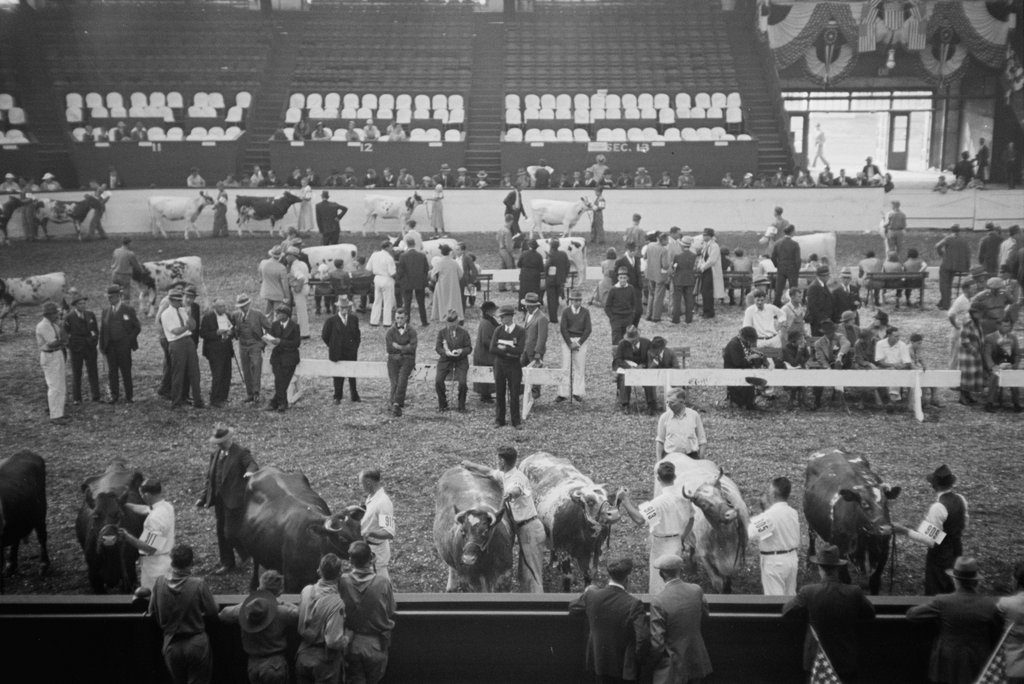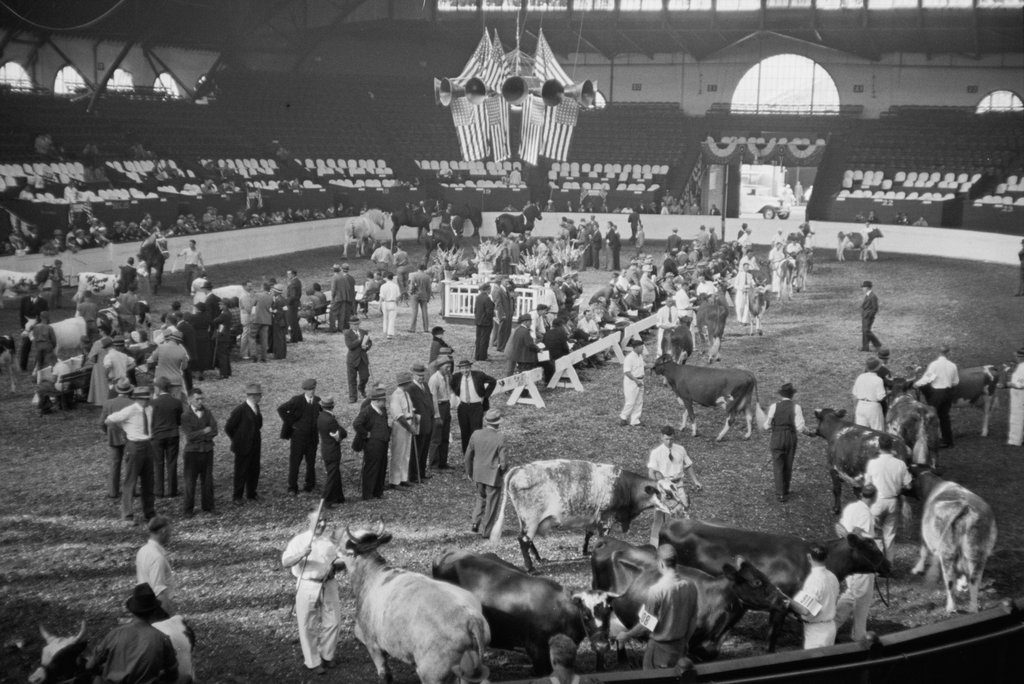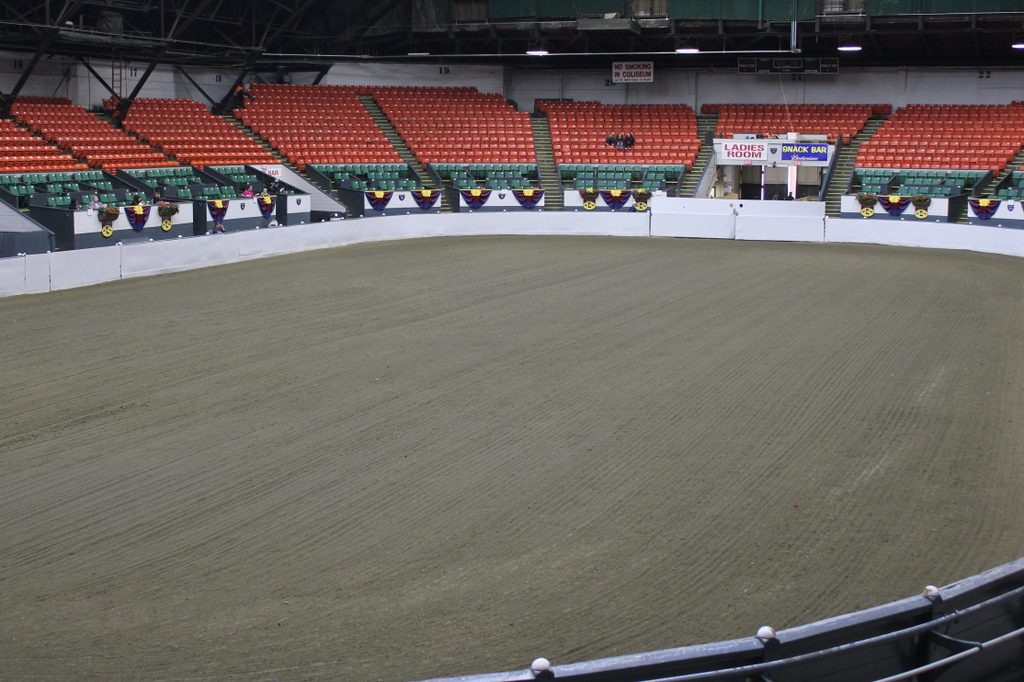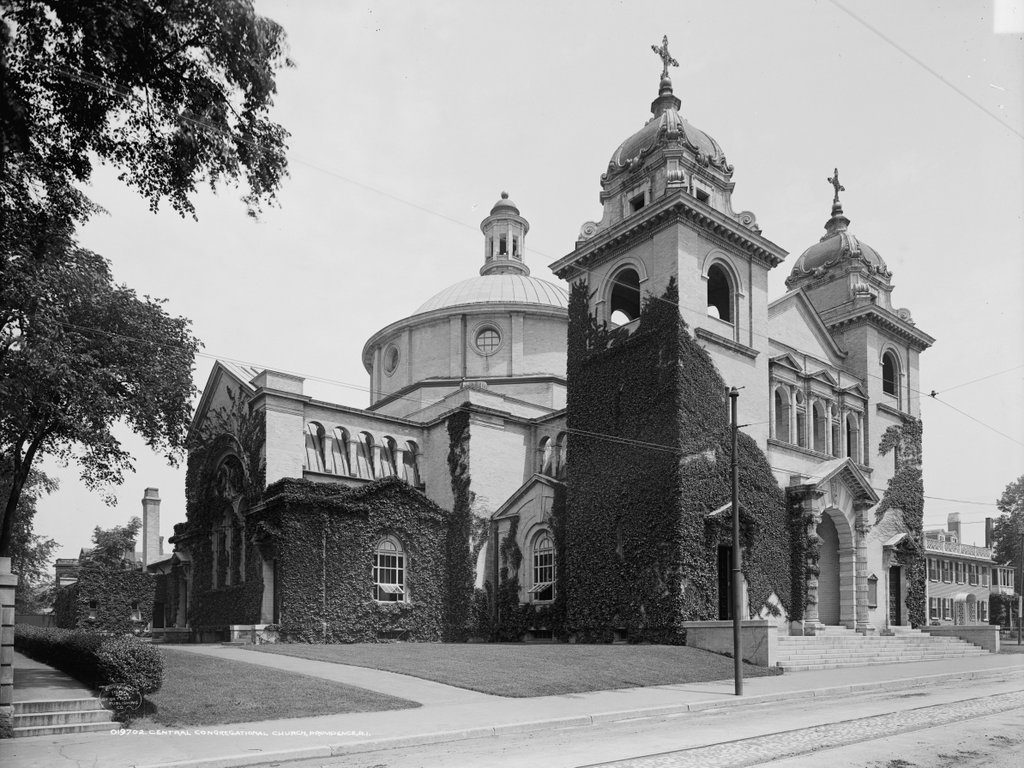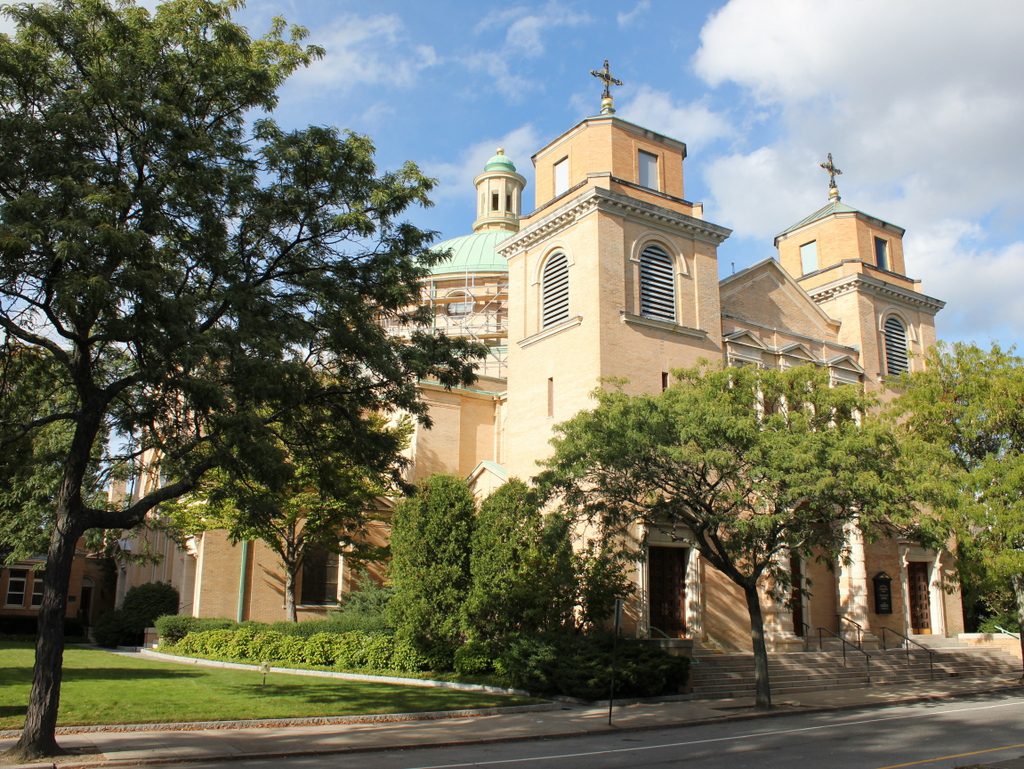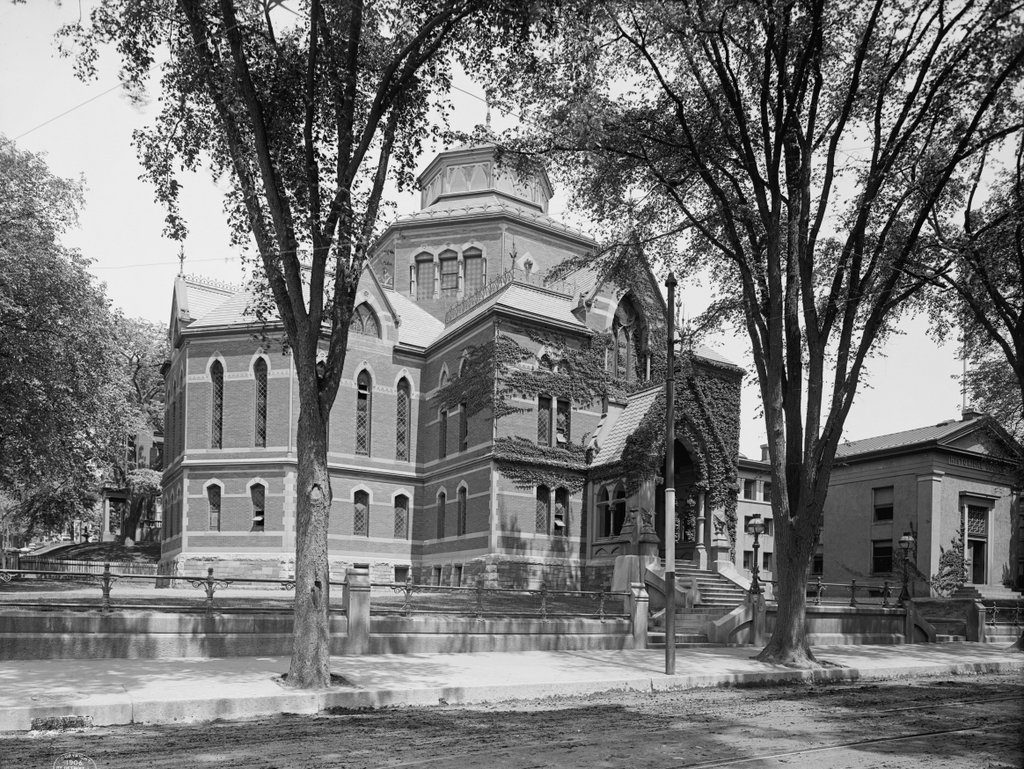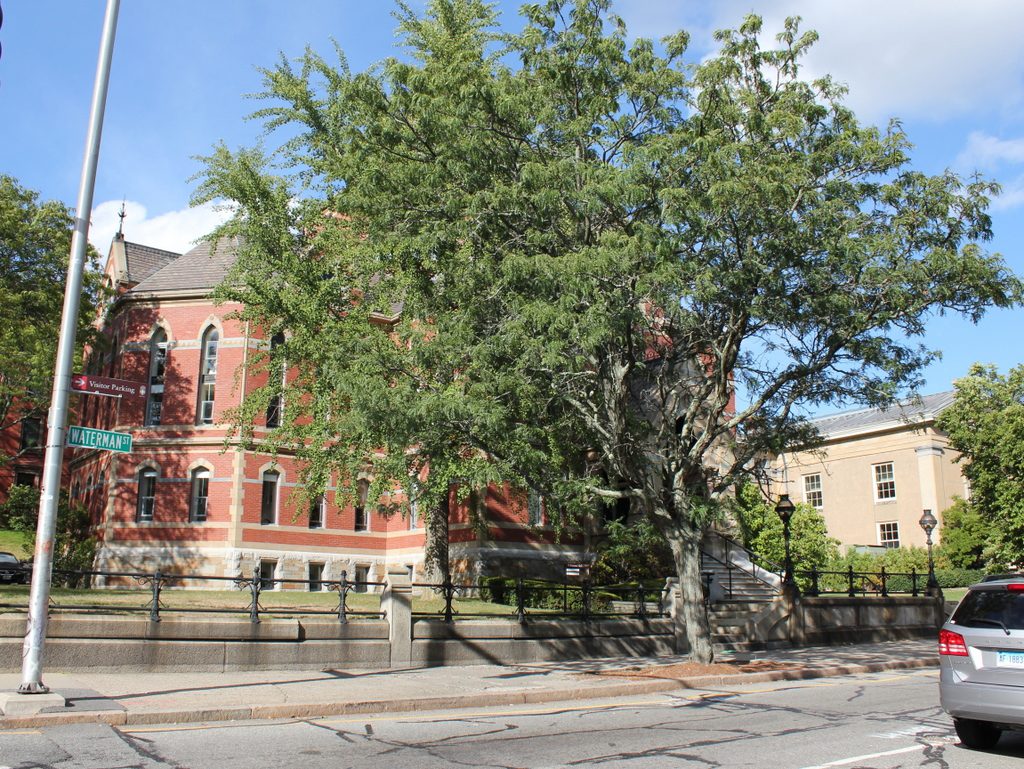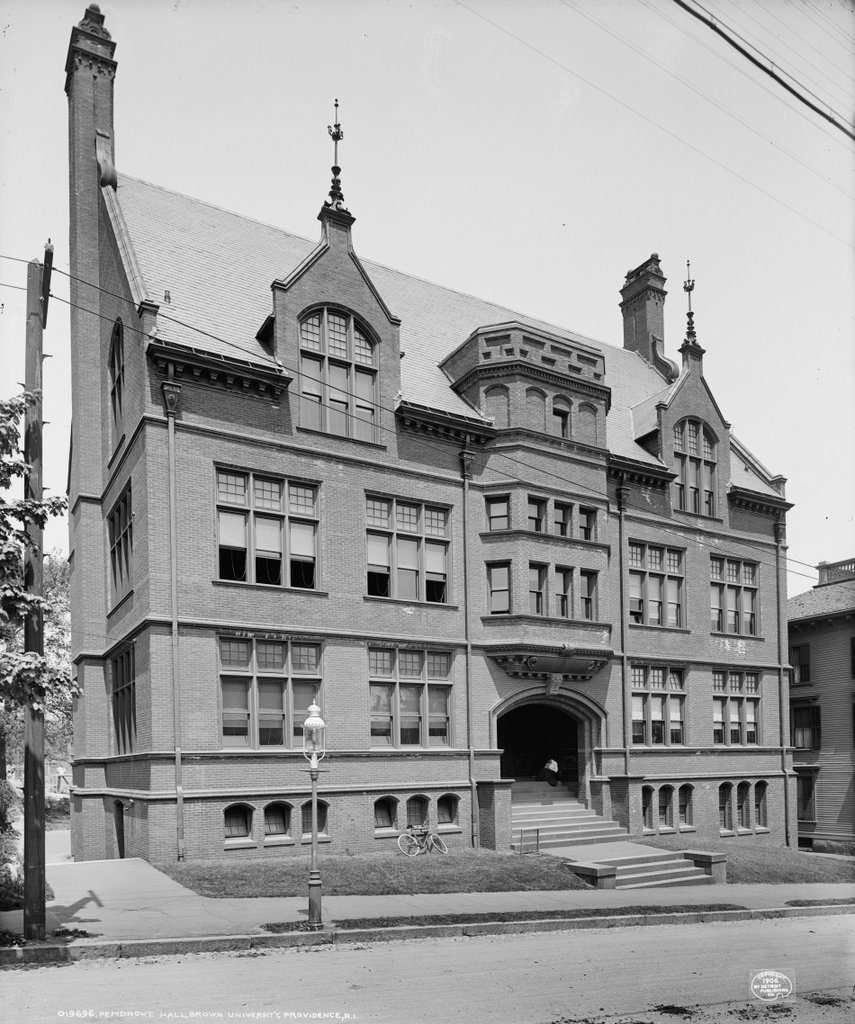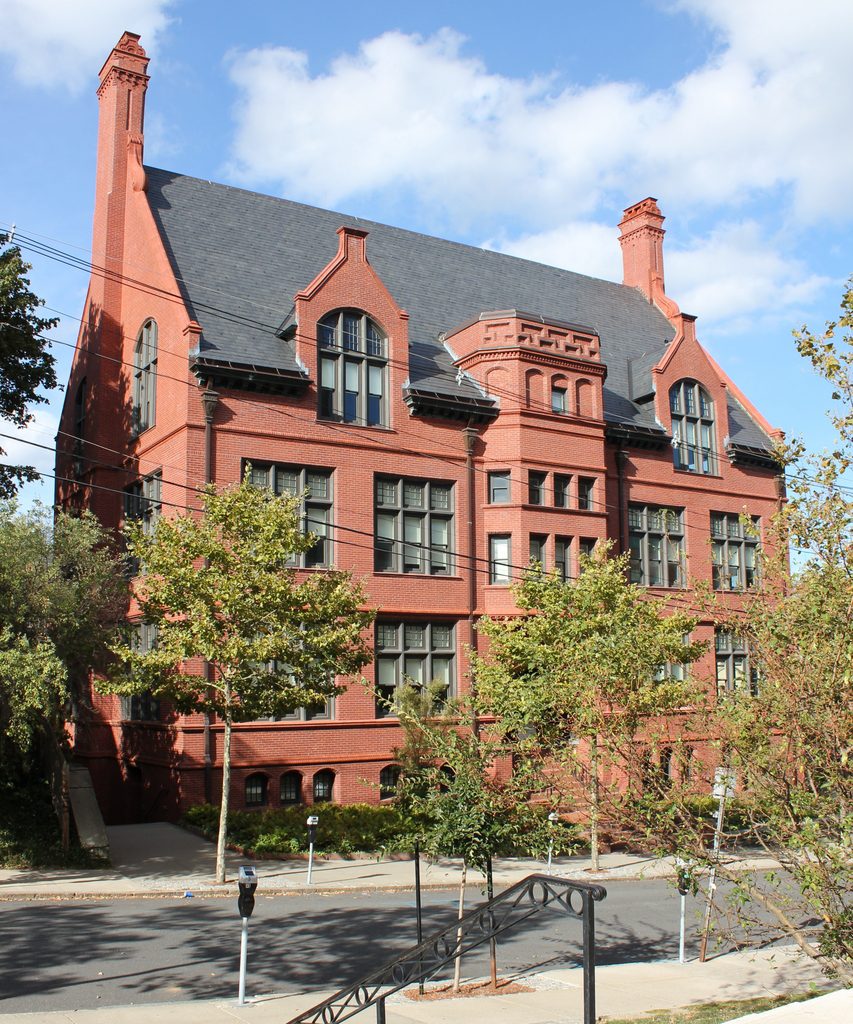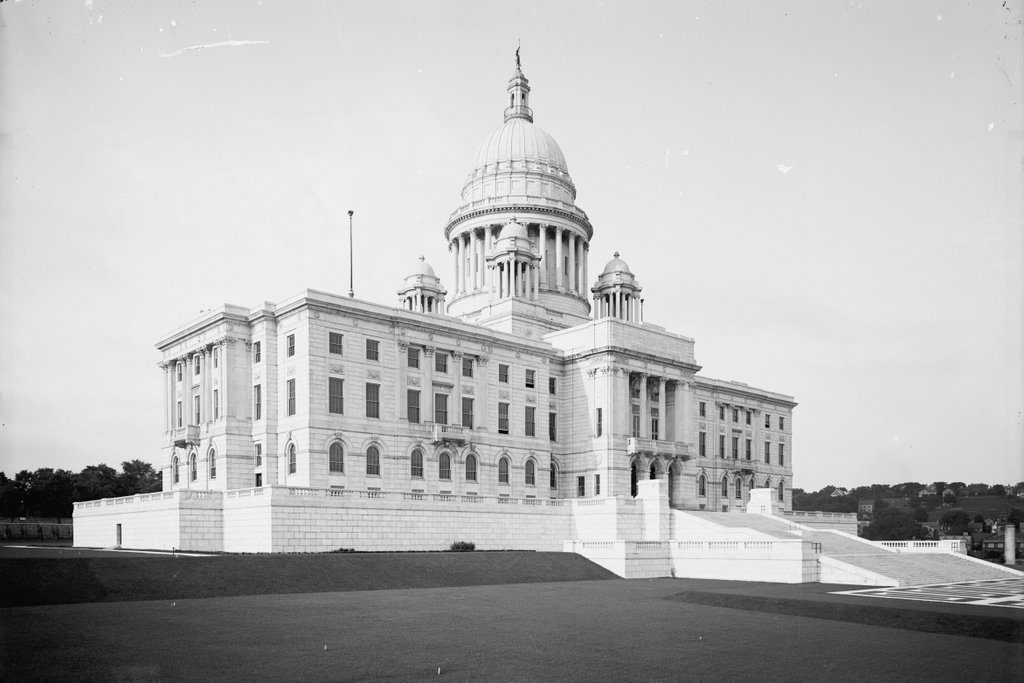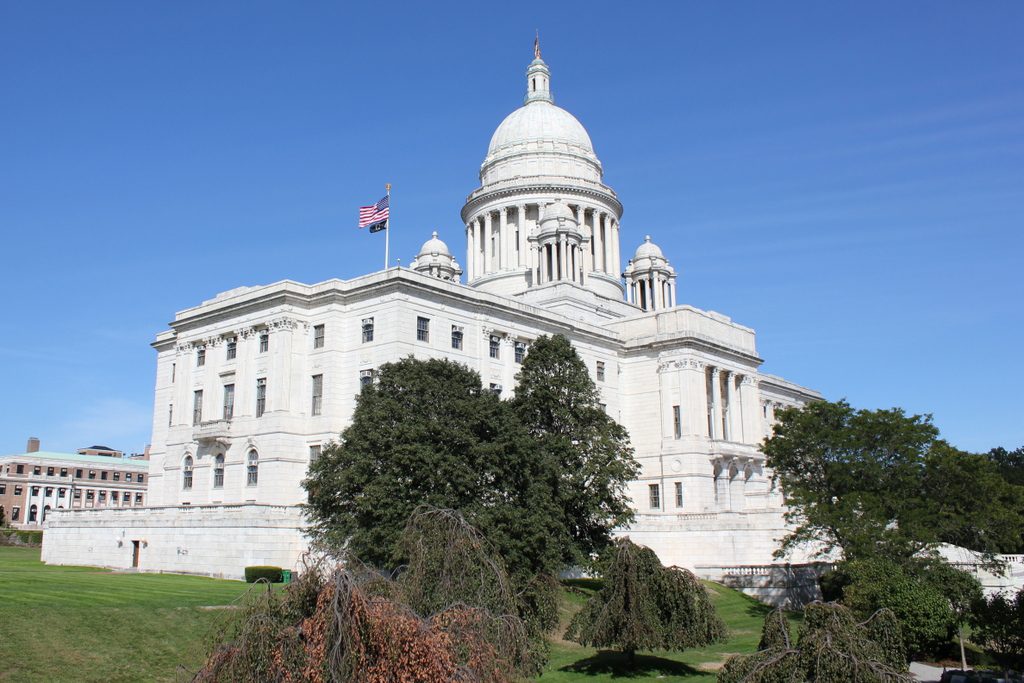Another view of the interior of the Eastern States Coliseum, in September, 1936. Image courtesy of the Library of Congress, FSA/OWI Collection.
The scene in 2016:
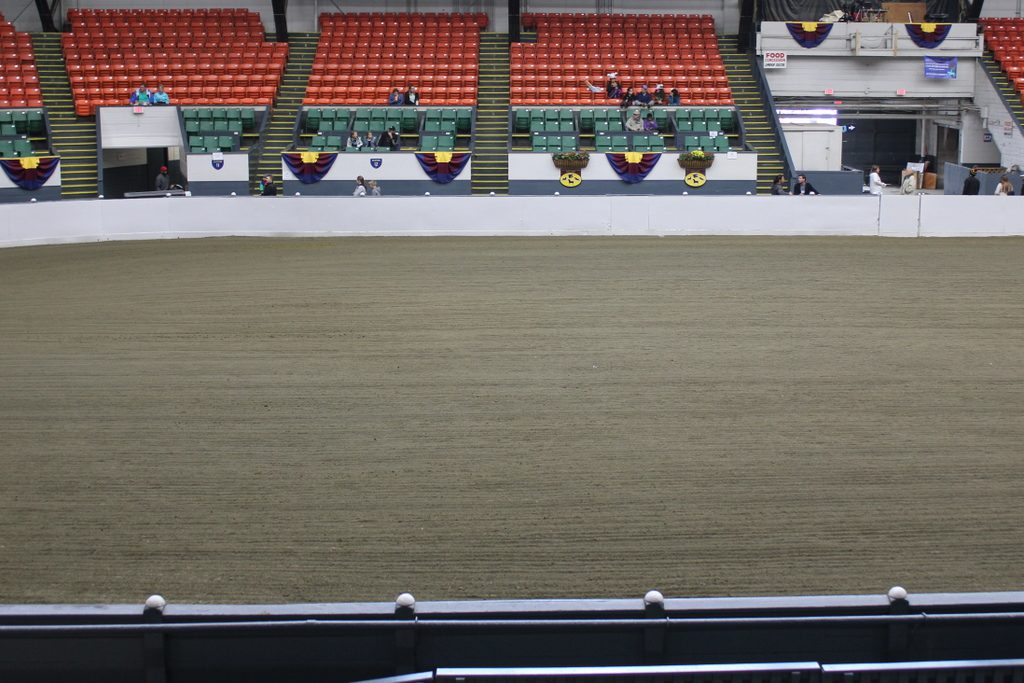
Like the photo in the previous post, the first photo here was taken by photojournalist Carl Mydans during his time with the Farm Security Administration. During the Great Depression, the agency employed a number of prominent photographers who traveled around the country, documenting conditions of rural areas across the country. Many of these photos showed the harsh conditions that farmers endured, including Dorothea Lange’s famous Migrant Mother photo, and have become iconic representations of the Great Depression.
During his travels, Carl Mydans, who was a Massachusetts native, took a series of photographs at the 1936 Eastern States Exposition, including some inside the Coliseum. Built in 1916 when the annual exposition began, the arena was used for everything from professional hockey to equestrian shows, and the first photo shows a cattle judging event that was happening when Mydans visited.
Today, although 80 years have passed, very little has changed inside the Coliseum since Mydans photographed it. The present-day photo was taken during the 2016 exposition, when both the agricultural fair and the building itself turned a century old. There were no events happening at the time that the photo was taken, but the Coliseum is still regularly used at the Big E every fall, as well as other times throughout the year.

